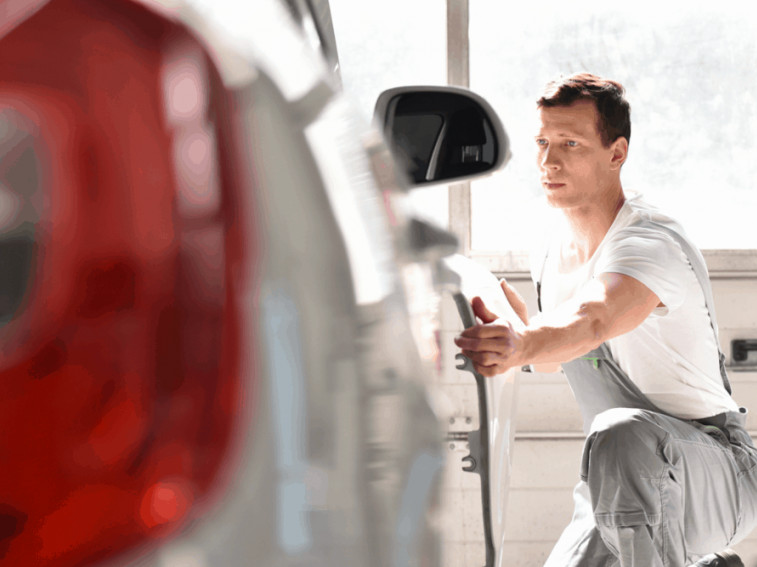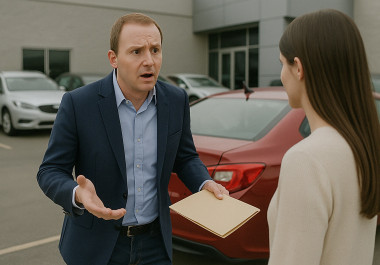When you’re on the hunt for accident damaged vehicles for sale, one of the key things that’s probably going to be at the forefront of your mind is the cost-benefit analysis. Essentially, whether you’re looking for a new vehicle to drive, or a car to fix up and sell on, you’ll need to make sure that any savings you make on the purchase aren’t outweighed by the time, effort and investment it’ll take to get it back into a roadworthy condition - so it helps to have a think in advance about what’s the easiest and most difficult types of car damage to repair!
The easiest types of accident damage repair
Body damage
This is by far the easiest to fix, and it’s not hard to see why. There are no complex mechanisms, moving parts, or particularly special materials that you need. If you’ve got a collapsed roof or a dented body panel, just a hammer and some other simple tools could be all it takes to get it back to an acceptable condition. Metal can be shaped mostly back into its original position, and front and rear bumpers can always be replaced. As for any paint issues, you can always reapply the paint yourself if you’ve got the tools and ability to do so, and it saves you the money you’d have to spend on labour. If that is indeed the case, you’ll probably find that the most expensive thing is the paint!
Replacing the air filter
This is another easy one, and you might even have done it before - after about 12,000 miles, they all need replacing anyway. All it takes is a quick look under the bonnet of your newly purchased auction car, and you should be able to locate the filter in a matter of seconds. Don’t forget to make a note of which way it faces, and how it fits into the structure of the car. Once you’ve got this down pat, it’s just a case of removing the old one, and inserting the new one in exactly the same way. You’ll probably need a screwdriver or a similar simple tool to get the job done properly. If you’re driving the car yourself, don’t forget to keep a note of how many miles you do, and when you’ll next have to change the filter.
Replacing the fluids
Since fluids like the engine oil, coolant and windshield washer fluid can be valuable in themselves, you might find that a previous owner has carefully used them all up, or even actively drained them from the car. Fortunately, if that’s the case, it doesn’t take any special knowledge or anything similar to top them up - mostly, it’s just a case of having the fluids themselves to hand, and knowing where the relevant vessels are. Don’t forget to use the correct grade of oil for your car, and take care not to overfill the engine! Similarly, ensure that there’s sufficient liquid in the cooling system, and while you’re at it, it’s also worth taking a look at the power steering fluid and brake fluid, and making sure they’re both at sufficiently safe levels.
Dealing with a damaged windscreen or wipers
The expense and severity of necessary repairs can be highly variable when it comes to windscreens, depending on the level of damage. Small cracks can be repaired simply by injecting an epoxy or acrylic adhesive into it. This acts as a sealant, preventing moisture and dirt from getting into it and minimising its visual impact. Cracks bigger than 40mm, though, will necessitate the replacement of the entire windscreen, as they could block the driver’s view when in motion - or even cause the windscreen to shatter at speed. This sort of replacement is not ideal but not prohibitively expensive, and can be as little as £100 to £150 - even less, if you’ve got the skills and materials to fit one yourself. That said, these are figures which can easily negate any savings you make on the car's purchase price if you’re not careful, so always check out the car in detail in advance first.
Similarly, wipers can be subject to general wear and tear if there’s ice or snow on the roads, as dirt and debris can break down the rubber over time, especially in inclement weather. It’s a good idea to replace them once or twice per year, depending on how bad the weather is. Again, this is quite a quick, simple job, and one that you don’t even necessarily need expert help or knowledge for.

The harder types of body damage repair
Engine
This is a fairly obvious one, but if the engine’s damaged in your new auction car, or if it’s missing entirely, then it’s probably not even worth considering. The engine is such a crucial and complex part that even relatively simple repairs are liable to cost a lot more time, energy and money to fix than the overall car is probably worth. If you’ve got spare parts from another similar vehicle, these can sometimes be easier, which is why some professional mechanics and dealers often buy several cars from our own online vehicle auctions here at RAW2K. Unless you’re able to make a well-judged assessment though, it’s often not worth the risk.
Electrical
Electrical systems have always had a big part to play in cars, but with modern technology accelerating the way it is, they’re now more overarching than ever, serving as the basis for everything from useful (but inessential) infotainment systems, all the way up to sophisticated Engine Control Units - essentially the ‘brain’ of the car, a vital component in its continuing ability to function. An electronic failure can sometimes mean that a useful but inessential component of the car is disabled, such as the radio or satnav, in which case sometimes it’s easier just to remove it or rip out the offending piece. Other times, it can signal a car in irreparable condition, and one that you’re probably best skipping over. Flood-damaged cars, for example, are rarely worth considering for first-time buyers.
Frame
The severity of any damage to the car’s underlying frame can be the most significant indicator of whether or not it’s worth buying. (In fact, it’s the underpinning concept of the various official salvage titles, with titles like Category N and Category S designed to indicate whether or a car it has any damage to its frame.)
Now, just because car is rated Category S (for Structural damage) doesn’t mean it’s not worth buying, and some cars can be quite useful even with a warped or twisted frame. However, others won’t be worth the time or effort; they can be nigh on impossible to fix, and make a severe impact on whether or not they’re safe to drive. Like most of the other repairs on this list, it largely depends on your level of personal mechanical knowledge and skill, and what equipment and materials you have to hand. If a car is rated Category B, that’s a sure sign it’s good for parts only, whereas a Category A car is almost universally not worth buying, as it’s supposed to be for scrap only. (That’s a big part of why we don’t sell them here at RAW2K, in fact.)
The level of damage you’ll find between cars is highly variable, and just because one has been in a bump or scrape doesn’t mean you should dismiss it offhand. As we touched on at the beginning of this post, it’s mostly just a matter of cost benefit analysis. The best thing you can do is to look at the car in detail first, and check out whether or not it’s worth the time and energy to fix.
Whatever you’re looking for, there’s certainly no shortage of choice to be found here at RAW2K. We’ve got auction cars from the likes of Vauxhall, Renault and Peugeot, as well as others from a range of leading global manufacturers. Why not take a look around, and see what you can find?




